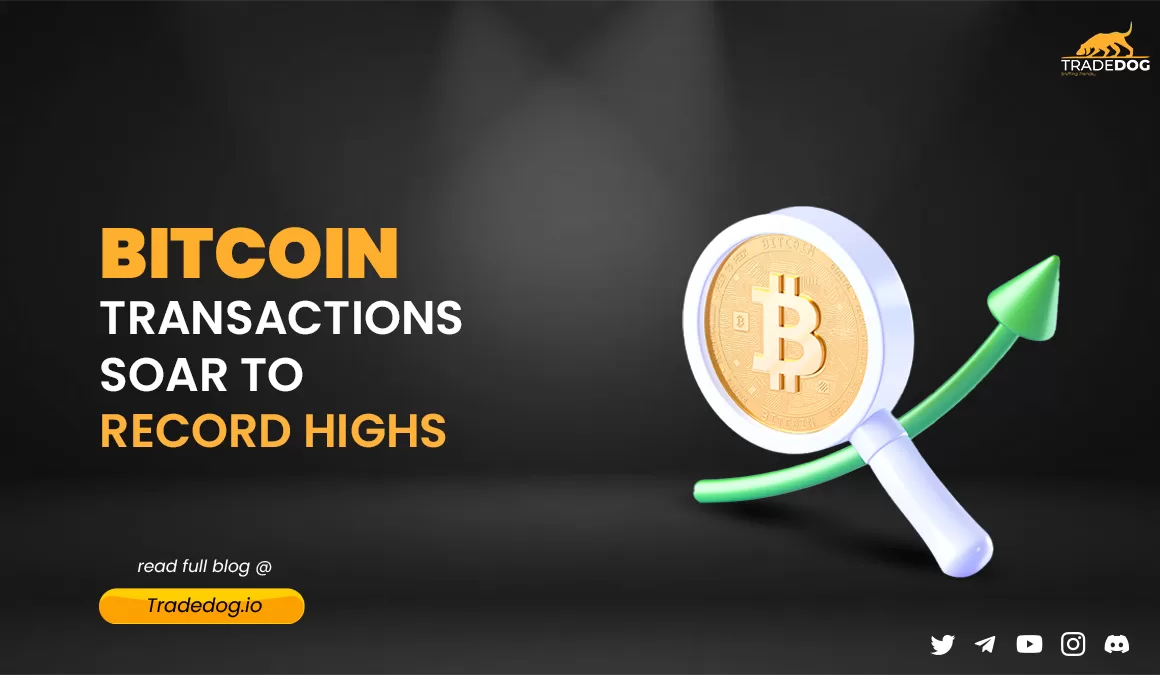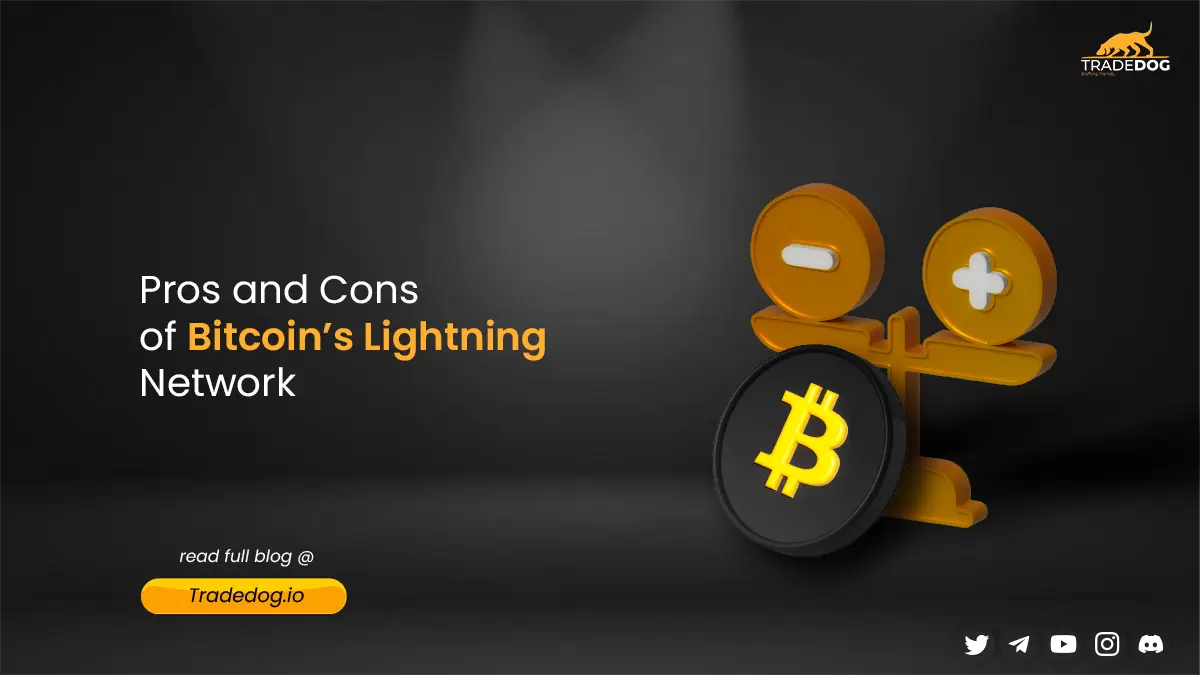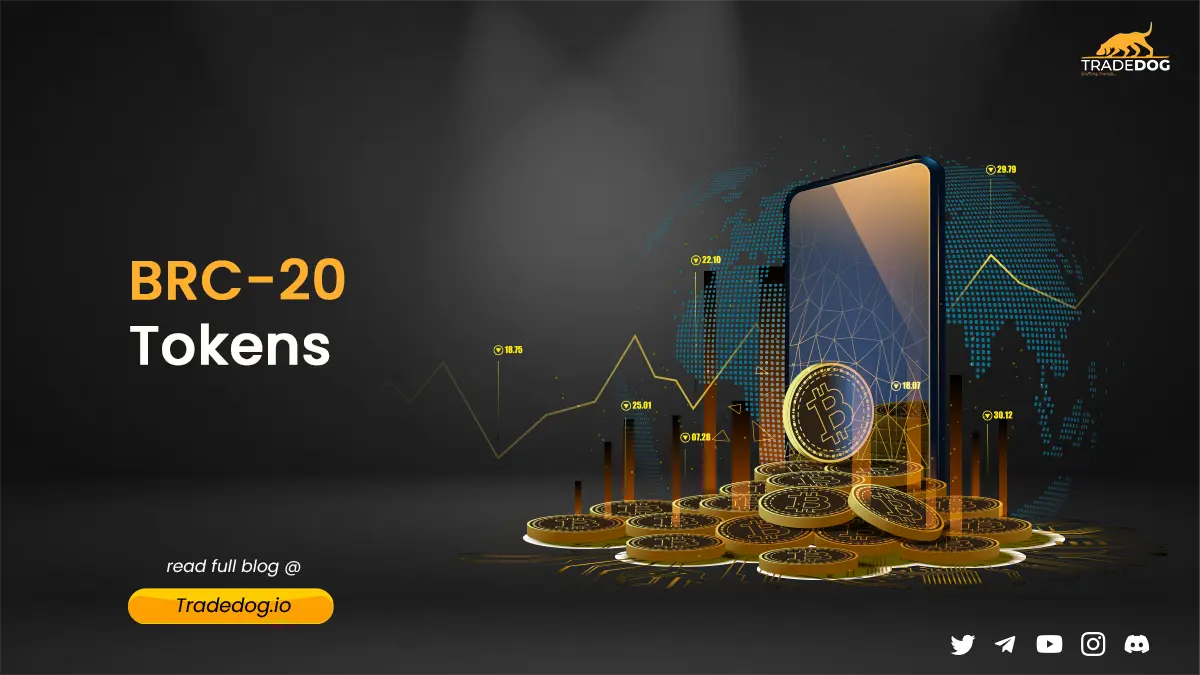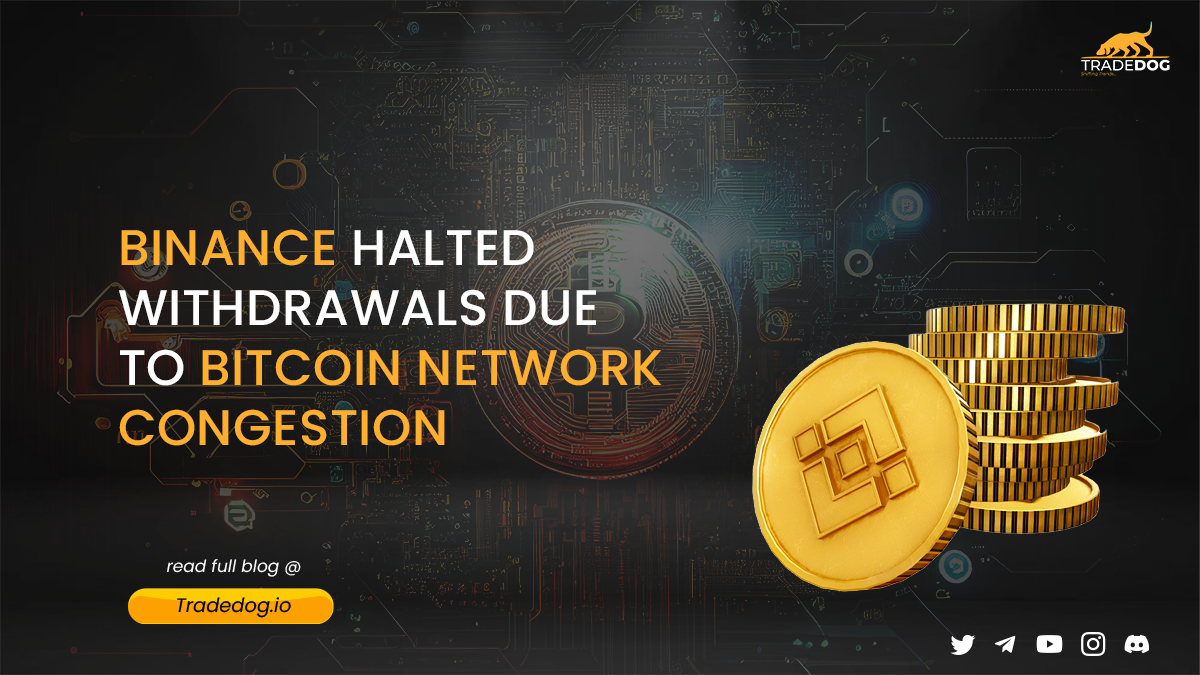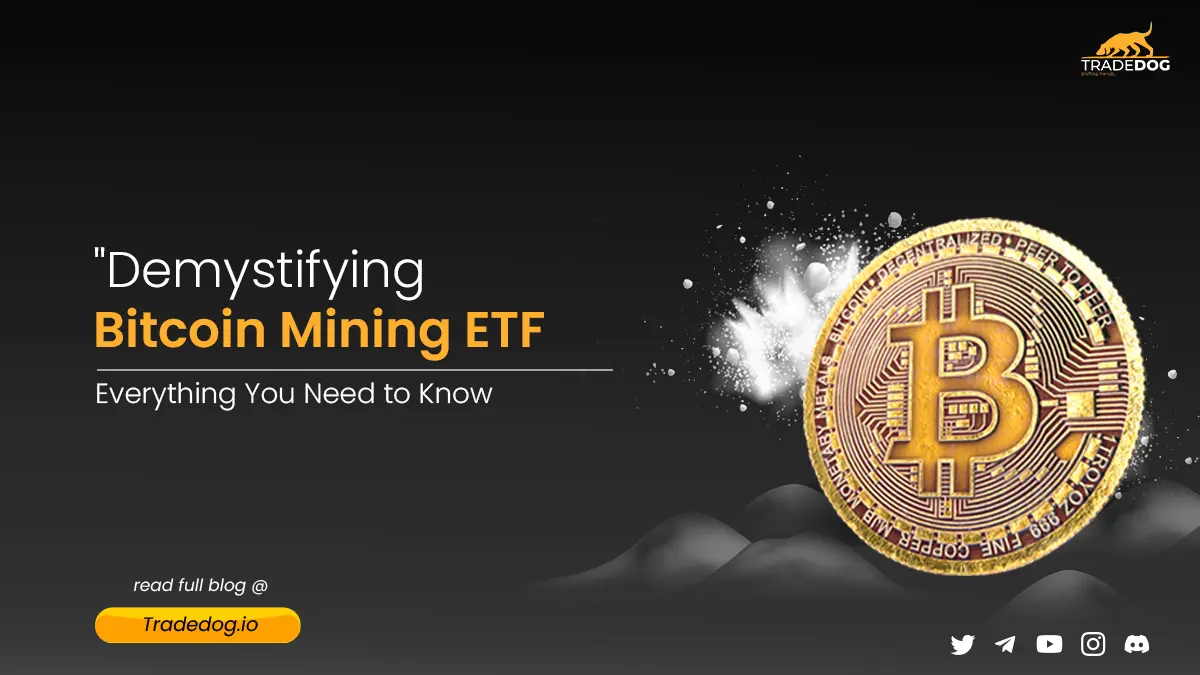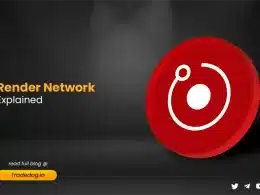Quick Links
Cryptocurrencies have been making waves in the financial industry for over a decade. Still, recent developments in the Bitcoin market have caught the attention of investors and enthusiasts alike. According to data provider BitInfoCharts, the daily number of Bitcoin transactions has just hit a new record, with a significant portion of these transactions being driven by the use of Ordinals. This article will explore what Ordinals are and how they impact the Bitcoin blockchain.

Understanding the Recent Surge in Bitcoin Transactions
Daily Transactions on the Bitcoin Network Reach Record High
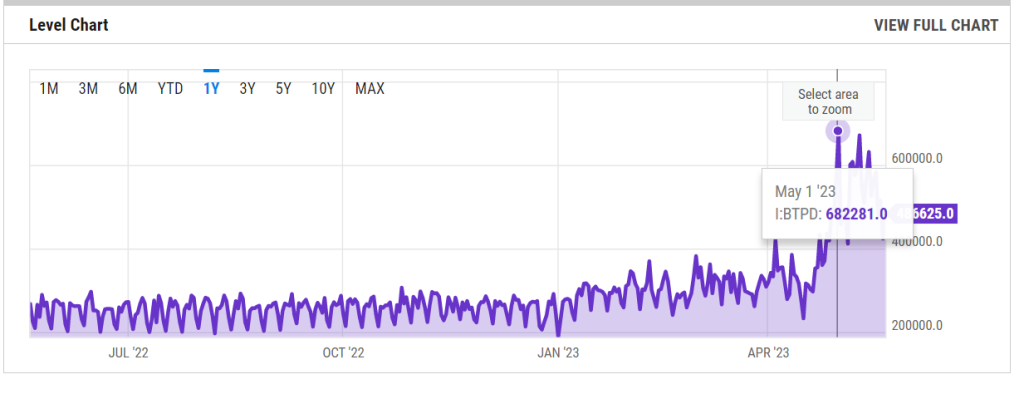
Data from ycharts suggest that Bitcoin’s daily transaction rate hit an all-time high of 682,281 on 1st May 2023. This number is nearly 78,000 higher than its previous peak during the 2017 bull market.
Ordinals: A Key Factor Behind the Surge
Approximately 54.6% of these transactions, or 372,832, were driven by the use of Ordinals. This protocol allows users to embed data into Bitcoin’s blockchain, much like minting non-fungible tokens (NFTs). This expansion of the blockchain’s use case has led to a significant increase in its userbase, as participants can do more than just borderless transfers or invest in the cryptocurrency.
The Impact of Ordinals on the Bitcoin Blockchain
What is Bitcoin Ordinals?
Bitcoin ordinals are a new type of non-fungible token (NFT) created on the Bitcoin blockchain. Founded by Casey Rodarmor, the ordinals protocol allows users to attach digital content such as art, text, or video to a unique satoshi, which is the smallest divisible unit of 1 Bitcoin.
Ordinals have given rise to a new era of data-driven transactions on the Bitcoin network. According to the data from Dune Analytics, the daily inscription of ordinals increased and saw a sudden hike at the start of the month, therefore, impacting overall Bitcoin transactional data

Expanding the Userbase of the Bitcoin Network
By enabling the storage of data on the blockchain, Ordinals have made it possible for a wider range of participants to engage with the Bitcoin network. This includes individuals and businesses who may not have been interested in Bitcoin before, but who can now use the blockchain to store and share information in a secure and decentralized manner.
Lowering the Barrier to Entry for Developers
Ordinals have also made it easier for developers to build on the Bitcoin network. By providing a decentralized storage solution, developers can build applications on top of the blockchain without having to worry about setting up their own storage infrastructure. This has lowered the barrier to entry for developers, making it possible for more people to build on the Bitcoin network.
The Changing Landscape of Bitcoin Transactions
Shifting Transaction Amounts
According to Tom Rodgers, Head of Research at crypto ETP provider ETC Group, Bitcoin transaction amounts have shifted significantly in recent years. In the past, transaction amounts tended to skew much higher, in the range of $1,000 to $10,000. However, transactions are now much smaller, with a large portion of them being around $1.
The Future of Bitcoin Transactions
As more users and developers begin to engage with the Bitcoin network through the use of Ordinals, we can expect to see further changes in the landscape of Bitcoin transactions. The expansion of the blockchain’s use case and the lower barrier to entry for developers could lead to a surge in the development of decentralized applications (dApps) on the Bitcoin network.
Conclusion
In conclusion, the surge in Bitcoin transactions is a clear indication of the growing interest in cryptocurrencies and blockchain technology. The rise of Ordinals has opened up a range of new use cases for Bitcoin, from supporting smart contracts to enabling users to digitally sign and verify documents. As the use of Ordinals continues to grow, we can expect to see even more use cases for Bitcoin and other cryptocurrencies, which could further drive their adoption.





